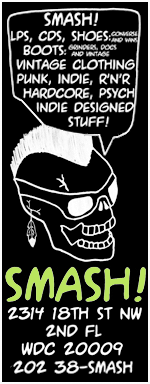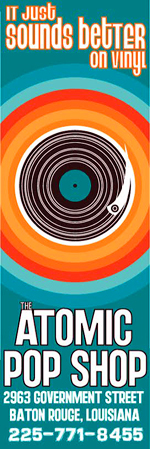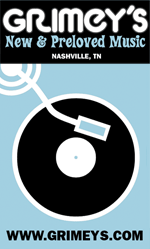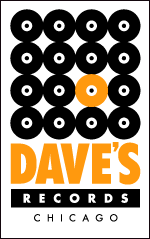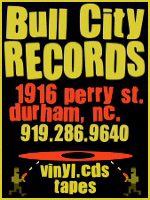
Remembering Lee Hazlewood, born on July 9, 1929. —Ed.
If Lee Hazlewood lingers in the contemporary cultural memory, it’s easily due to his work with Nancy Sinatra. On The LHI Years: Singles, Nudes & Backsides (1968-71), the Light in the Attic label collects a bunch of his post-Nancy collaborations and a welcome helping of his solo shots, and the results are highly recommended not just for Hazlewood’s fans but for anyone with an inclination for well-crafted oddball pop.
 Though his music never wavered from its thoroughly commercial designs, Lee Hazelwood was still a truly strange duck. And the undeniable datedness of his work can really add to the overall weirdness factor, though that’s in no way a bad thing; if often possessing production values and orchestrations that are accurately assessed as “middle of the road” (not the same as “mainstream”), his songs almost always avoid falling into simple kitsch.
Though his music never wavered from its thoroughly commercial designs, Lee Hazelwood was still a truly strange duck. And the undeniable datedness of his work can really add to the overall weirdness factor, though that’s in no way a bad thing; if often possessing production values and orchestrations that are accurately assessed as “middle of the road” (not the same as “mainstream”), his songs almost always avoid falling into simple kitsch.
But Hazlewood was more than just a bizarro/sophisto cowboy that blended Vegas-inclined pop with a country-inflected folksiness both on his own and in a collaboration with Sinatra that still comes off like a Swingin’ ‘60’s reaction to Dolly and Porter. Indeed, while loads of folks are familiar with the string of late-‘50s hits that he produced and co-wrote with Duane Eddy, it’s also true that most of those listeners aren’t cognizant of Hazlewood’s actual involvement with those songs, a short flowering of creativity that stands amongst the finest instrumental rock music ever recorded.
He was also the impresario of Lee Hazlewood Industries, a fleeting subsidiary label of ABC Records. Naturally, a fair portion of LHI’s relatively slim discography is dedicated to its namesake; both his solo album Forty and The Cowboy and the Lady, credited to the duo of Hazlewood and actress Ann-Margret were released in 1969, and Cowboy in Sweden came out the following year. Back around 1999 or so, Steve Shelley’s Smells Like Records began admirably reissuing some of Hazlewood’s harder to find stuff on compact disc. This program included both the Ann-Margret collab and Cowboy in Sweden, but plenty of worthy bits and pieces slipped through the cracks.
As its title makes plain, this 2LP corrals a bunch of those bits and pieces with the supposed intention of further volumes to come, and the sustained level of quality across these four sides of vinyl really makes one hope that Light in the Attic comes through on their objective to excavate the LHI archives. It opens with “Califia (Stone Rider),” a duet with girlfriend Suzi Jane Hokom that mines familiar territory to impressive success; that combination of unabashed lushness and faux-earthy twang, the echo on Hazlewood’s booming, edgy baritone, and the way he smartly blended his voice with the softer, more welcoming elements of a female counterpart.
Things hardly look down from there, with the music making clear that Hazlewood had no problem playing to his strengths. To elaborate, seven of the record’s seventeen tracks are duets with female counterparts, all obviously inspired by the fruitfulness of his artistic union with Nancy Sin, and while none of them charted in the US/UK that’s not for lack of value. Another track with Hokom, three with Ann-Margret, and two with Swedish singer Nina Lizell find him cultivating the contrast between tough and sweet with much success.
This blend of the masculine and feminine has become a big factor in Hazlewood’s work, even when he’s behind the chair. His was the pen responsible for “These Boots Are Made for Walkin’” after all. In fact, his status as a collaborator has sorta come to dominate his legacy; while his ‘60’s solo albums sold well enough to keep him in demand, it’s also true that Hazlewood never had a hit single under his name alone, and some people view the guy’s solo output as substantially lesser to his work with Nancy and the gals.
To put it mildly, this is a gross miscalculation. Just for starters, I’ve never been able to decide between pre-LHI solo slabs Lee Hazlewoodism – It’s Cause and Cure (for MGM) or Love and Other Crimes (for Reprise) as a personal favorite. Both are world class collections of strong song from a truly unique voice, and The LHI Years includes more of the same top flight material. “The Bed” squarely hits the middle ground between honky-tonk and high gloss that found him in the producer’s chair for Singer of Sad Songs, one of Waylon Jennings’ finest pre-Outlaw LPs.
But when the music called for it he could also show admirable restraint, as the spare, hung-over “If It’s Monday Morning” and the driving “Bye Babe” both display. “No Train to Stockholm” feels like a legit slice of flower power-era pop, and it matches up well with the Jesus as proto-hippie storytelling of “Trouble Maker.” These tracks can serve as a satisfactory corrective, for Hazlewood is sometimes erroneously tagged as a wannabe hipster, or categorized by more polite denigrators as a kooky and aged interloper upon the grassy knolls and bubbling fjords of the late-‘60s youth movement’s supposed exalted purity.
This is another way of saying that some crabby sticklers persist in viewing “Some Velvet Morning” as “fake” psychedelia, but the people holding this odious opinion probably don’t like Eric Burdon’s “Sky Pilot” either. What a bunch of killjoys. In reality, Lee Hazlewood is one of American music’s true eccentrics, and as the cover of The LHI Years plainly shows, he was part playboy and part sage prankster, halfway between the establishment and the margins with nary a trace of conflict between the two.
Of the duet tracks, those with Ann-Margret stand up strongest, particularly the gleefully over the top festival of corn vs. schmaltz that is “Sleep in the Grass,” though the fairly laid-back country-folk-pop of “Victims of the Night” is also quite appealing. “Nobody Like You” with Hokom is one idea stretched a little beyond its limit, though it’s not unpleasant for all that. And both tracks with Lizell acquit themselves with purpose, though “Hey Cowboy” really tackles the era’s Bacharach-esque MOR tendencies with vigor.
At this point the LHI label is still mostly remembered for Hazlewood’s releases, though the company also issued Safe at Home, the only LP from Gram Parsons’ first group The International Submarine Band. But the imprint also put out some highly regarded and quite hard to find work from artists like The Kitchen Cinq, Arthur and the Aggregation, Honey Ltd., The Surprise Package, and Sanford Clark, whose 1956 hit “The Fool” happened to be written by Hazlewood.
It’s unclear how much if any of this material will surface in Light in the Attic’s LHI reissue plans, but here’s hoping at least some of it makes it onto disc, for it’ll only serve to deepen the already rich legacy of an absolutely one of a kind artist. The LHI Years: Singles, Nudes & Backsides (1968-71) is a trove of Hazlewood’s brilliant work. Not every song is perfect, but every song is essential. It’s a beautifully done package from one of our best reissue labels.
GRADED ON A CURVE:
A






















